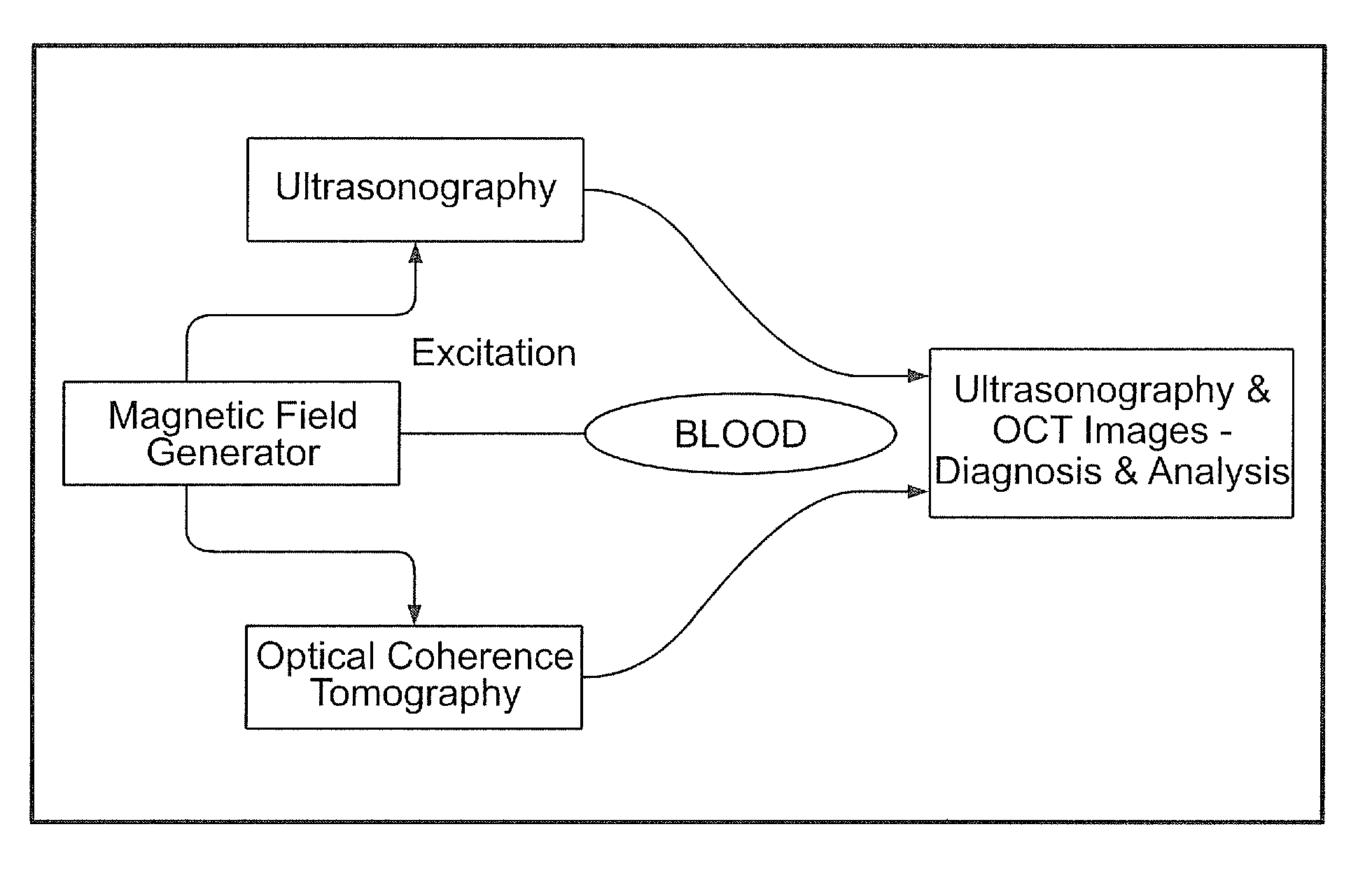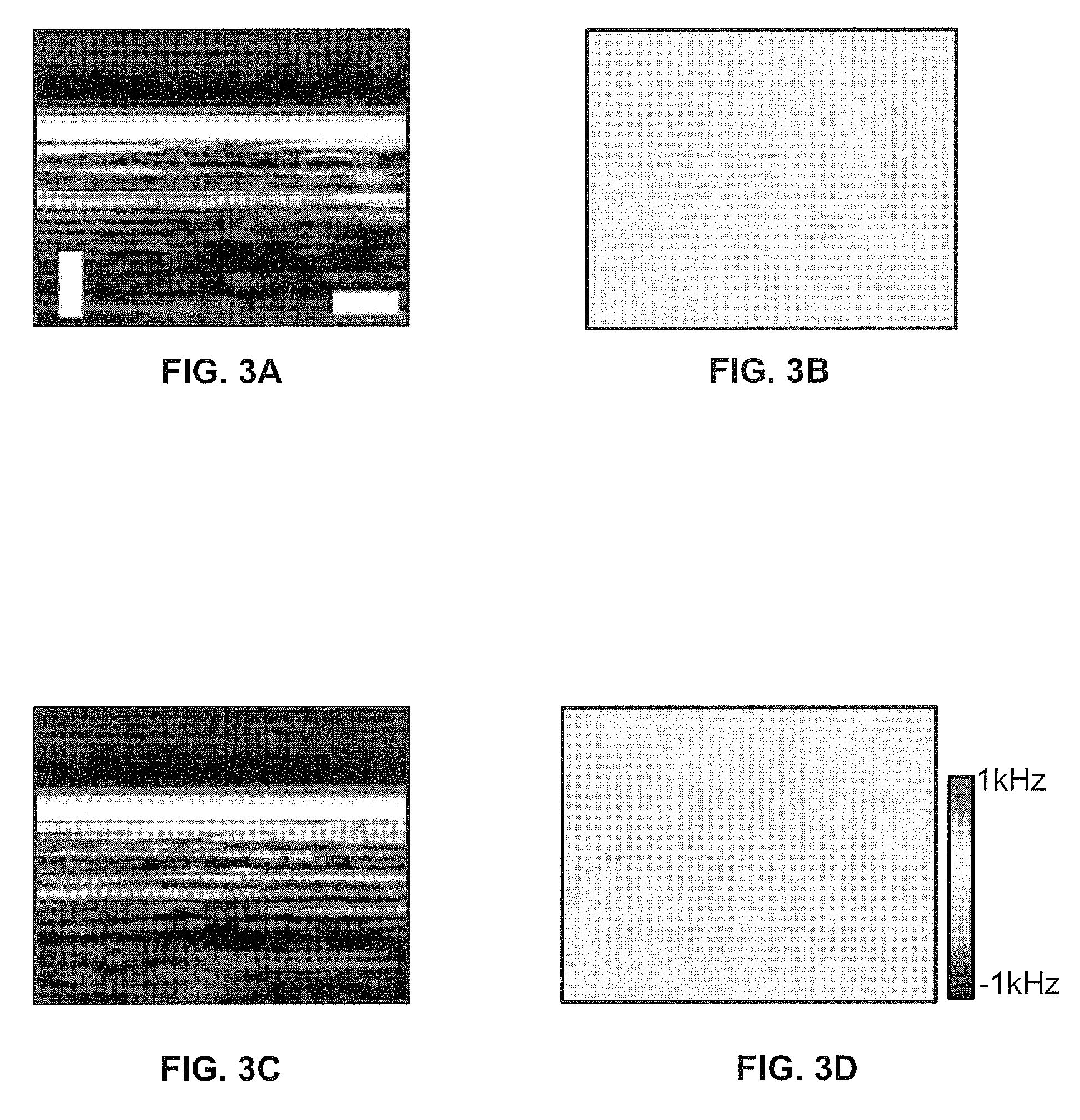Hemoglobin contrast in magneto-motive optical doppler tomography, optical coherence tomography, and ultrasound imaging methods and apparatus
a technology of magnetomotive and contrast, applied in the field of medical diagnostic imaging, can solve the problems of limited axial scanning speed and spatial resolution, difficult detection of small vessels with slow flow rate, and easy to be affected by ghosting or ghost images
- Summary
- Abstract
- Description
- Claims
- Application Information
AI Technical Summary
Benefits of technology
Problems solved by technology
Method used
Image
Examples
example 1
MM-ODT Imaging of the Doppler Shift of Hemoglobin by Applying an Oscillating Magnetic Field to a Moving Blood Sample
[0047]M-mode OCT / ODT images of a capillary glass tube filled with a stationary turbid solution with and without an external magnetic field as a control sample were recorded, as shown in FIGS. 3-4. A 750 μm-inner diameter glass capillary tube 200 was placed perpendicularly to the probing beam 70, as shown in FIG. 2. Fluids used for flow studies were injected through the tube at a constant flow rate controlled by a dual-syringe pump (Harvard Apparatus 11 Plus, Holliston, Mass.) with ±0.5% flow rate accuracy. The turbid solution was a mixture of deionized water and 0.5-gm latex microspheres (μs=5 mm−1). The magnetic flux density and its frequency were approximately 0.14 T and 50 Hz, respectively. M-mode OCT / ODT images were acquired for 100 ms per frame. FIGS. 3a and 3b show M-mode OCT and ODT images without any external magnetic field, respectively. The ODT image in FIG. ...
PUM
 Login to View More
Login to View More Abstract
Description
Claims
Application Information
 Login to View More
Login to View More - R&D
- Intellectual Property
- Life Sciences
- Materials
- Tech Scout
- Unparalleled Data Quality
- Higher Quality Content
- 60% Fewer Hallucinations
Browse by: Latest US Patents, China's latest patents, Technical Efficacy Thesaurus, Application Domain, Technology Topic, Popular Technical Reports.
© 2025 PatSnap. All rights reserved.Legal|Privacy policy|Modern Slavery Act Transparency Statement|Sitemap|About US| Contact US: help@patsnap.com



